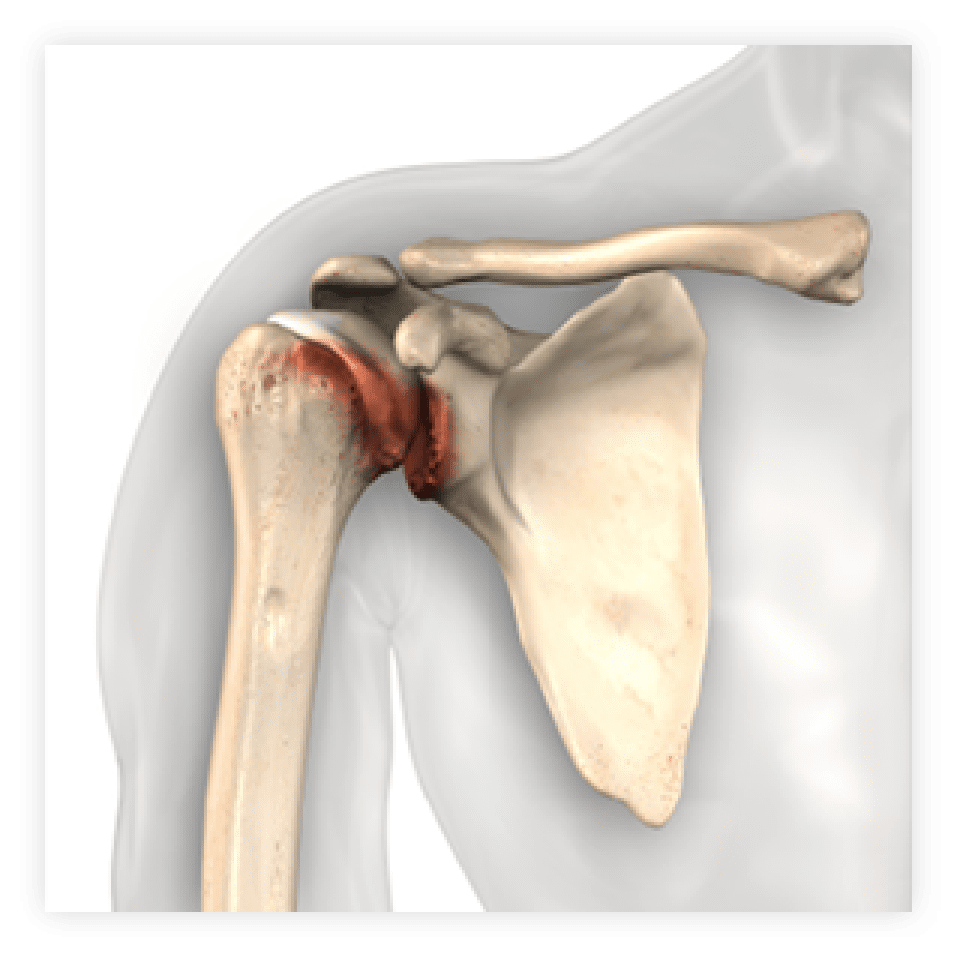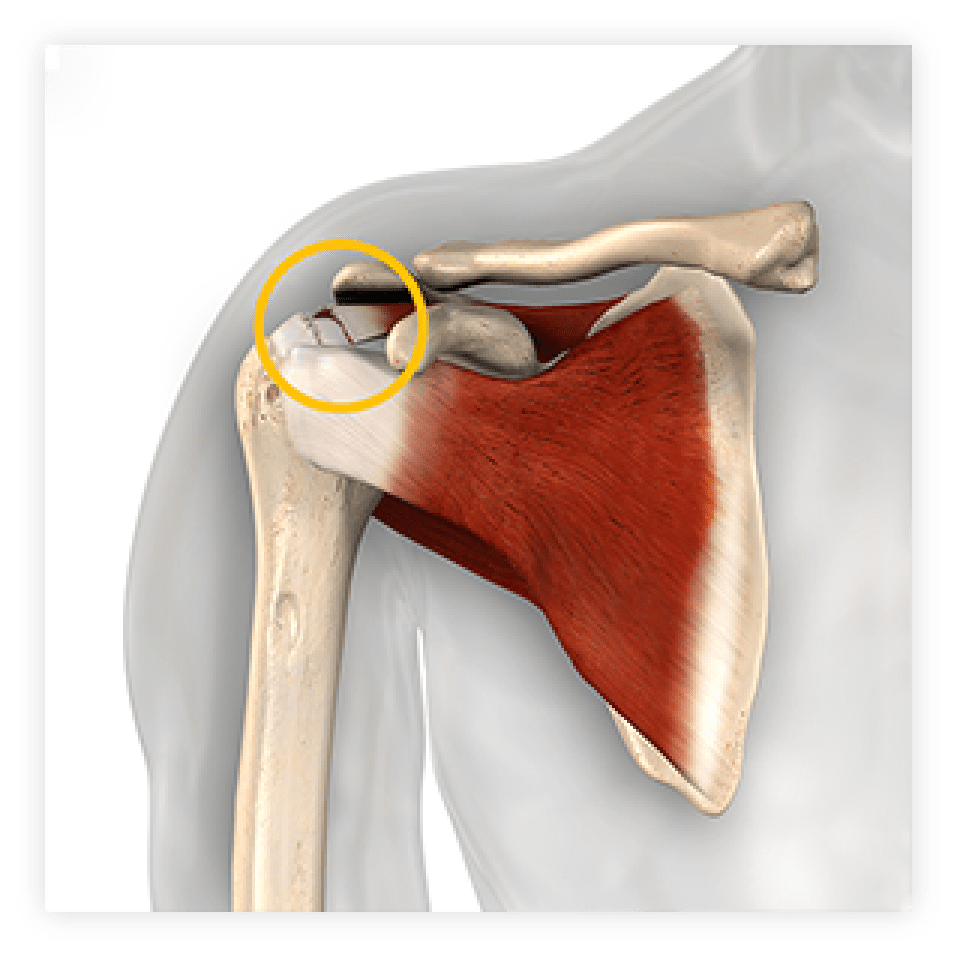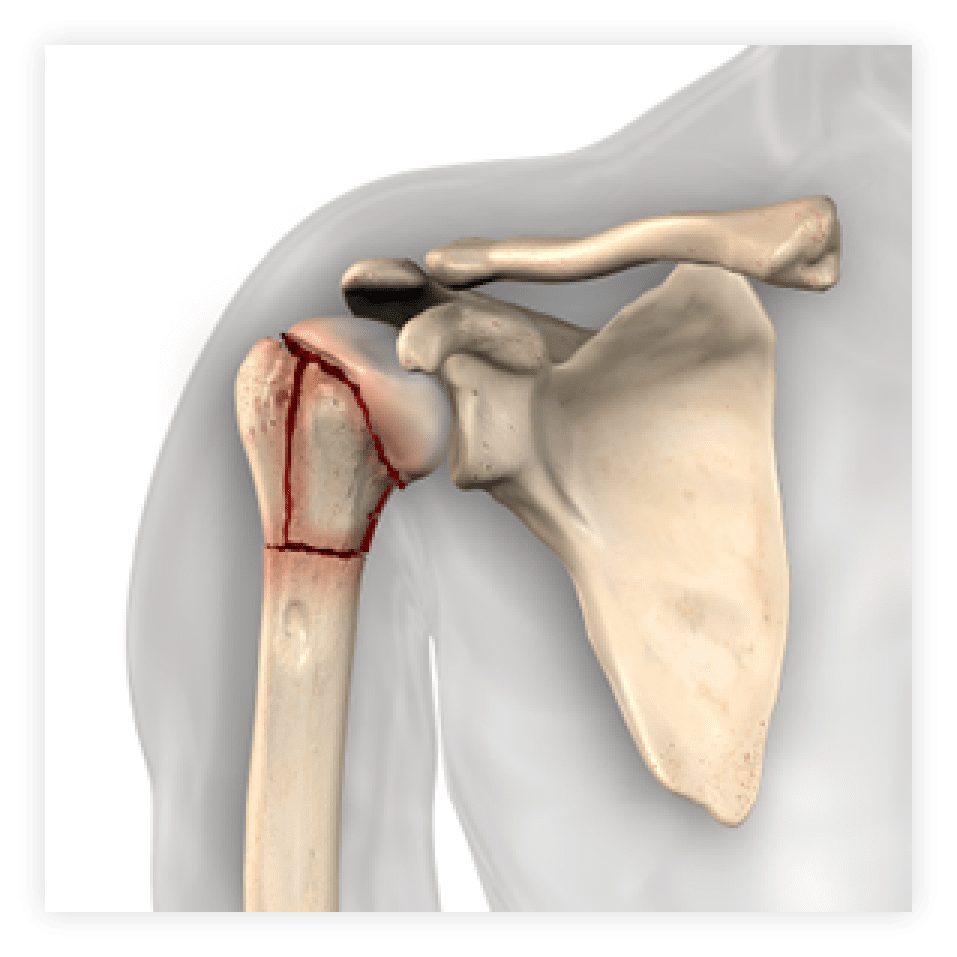Arthritis
Arthritis causes the cartilage – the smooth tissue covering bones – to break down. When the cartilage breaks down, the ball and socket of the shoulder joint rub against each other, which is painful, causes swelling, and limits your range of motion. There are many types of arthritis, the most common types affecting the shoulder are osteoarthritis, post-traumatic arthritis, and rheumatoid arthritis. When pain and lack of mobility reaches an advanced stage, shoulder replacement may be recommended.
Osteoarthritis (OA), the most common form of arthritis associated with shoulder pain, can be caused by wear-and-tear over time or can develop years after an injury, like a dislocation.1 Symptoms may include stiffness in the shoulder on waking, pain in the shoulder during or after movement or exercise, or a crunching sound or feeling when moving the shoulder. Symptoms may worsen progressively over time.
Rheumatoid Arthritis (RA) is an autoimmune disease in which the body’s own immune system attacks joint tissue causing inflammation that damages and breaks down the cartilage, leaving bone rubbing on bone. Symptoms may include pain, swelling, and stiffness in multiple joints, and stiffness in the shoulder on waking that doesn’t go away. RA may also appear as symmetrical symptoms (symptoms in both shoulders). Symptoms may appear suddenly and get worse over a few weeks.

Torn rotator cuff
Rotator cuff tears are common, and are more likely to occur after age 40. As we age the tendons that make up the rotator cuff weaken and are more likely to tear during a fall, when pulling or lifting with force, or during repetitive overhead activity such as painting, swimming, and weightlifting. When a torn rotator cuff is not repaired, the shoulder doesn’t move the way it should which causes wear and tear on the joint.
Over time, injury to the rotator cuff muscle or muscles, can lead to changes in the bone and surrounding tissue, limiting your movement and making your arm feel weaker.2
This condition is referred to as cuff-tear arthropathy. Symptoms may include pain in and around the shoulder, pain when lifting or rotating the arm, and pain that gets worse at night and when sleeping on the affected shoulder. A reverse shoulder replacement is often recommended for large rotator cuff tears that can’t be repaired and in cases of rotator cuff-tear arthropathy.

Avascular Necrosis (AVN)
Avascular Necrosis (AVN) occurs when normal blood supply doesn't reach the ends of the bone to keep them healthy. As bony matter dies, the ends of the bones weaken, sometimes collapsing, damaging some of the surrounding cartilage and soft tissue with it. AVN can affect the shoulder joint, most commonly at the top end of the long upper arm bone, the humerus.3
Shoulder fracture
A shoulder fracture can be caused by a fall on the shoulder, car accident, or contact sports, and involves at least one of the three shoulder bones: scapula (shoulder blade), clavicle (collar bone), or humerus (upper arm bone).
Proximal humerus fracture
The most common type of shoulder fracture is a proximal humerus fracture–a break in the “ball” of the shoulder joint at the top of the upper arm bone. Although proximal humeral fractures can occur at any age, they are more common in older individuals due to poor bone density (osteoporosis), and may occur as the result of a low-impact fall on an outstretched arm. Symptoms may include pain in the shoulder, swelling and numbness in the affected arm, and limited shoulder movement. You may be unable to raise the affected arm.

Shoulder dislocation
Shoulder dislocations commonly occur because of a fall. An outstretched arm positioned to "catch" the fall can force the top of the humerus or “ball”, to shift out of the socket and towards the front of the body. A person is at an increased risk of having more dislocations after the first one occurs. The rotator cuff may tear when the dislocation occurs; shoulder replacement may be recommended if the rotator cuff is irreparable or completely torn.

Download this brochure to learn more about the causes of shoulder pain and what you can do.
Your doctor will examine your shoulder and may ask you to take a few tests to determine the source of your pain.
